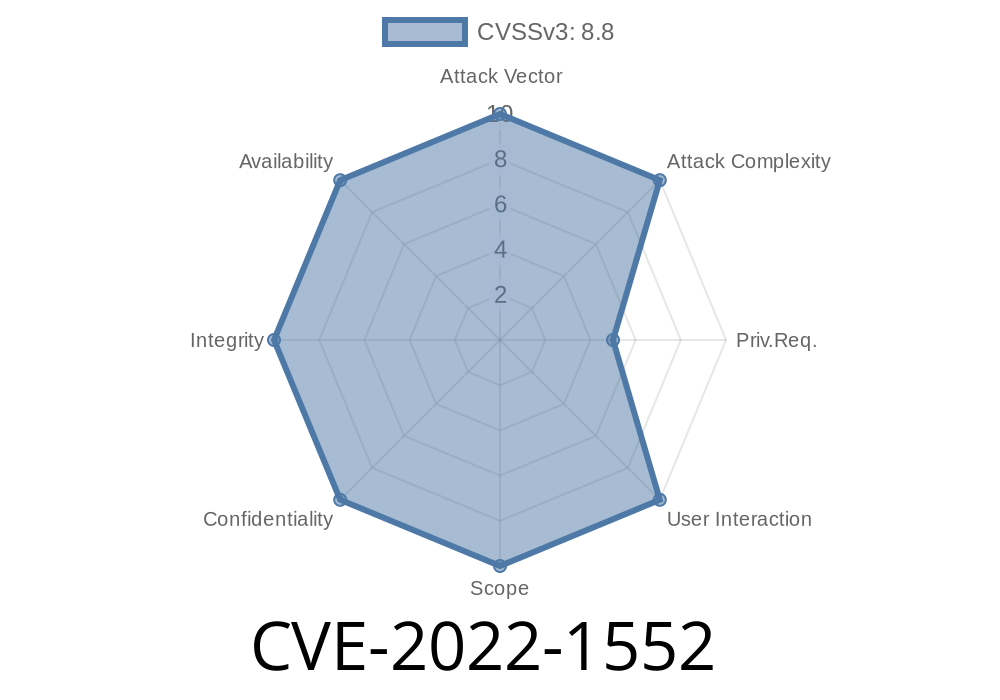The PostgreSQL team has recently discovered a critical security vulnerability in their database management system, assigned as CVE-2022-1552. This flaw allows an attacker with the ability to create non-temporary objects in a schema to execute arbitrary SQL functions with a superuser identity. In this article, we will explore the details of this vulnerability, the exploitation process, and related code snippets. Furthermore, we will cover where to find the original references and mitigations to protect your PostgreSQL environment from this issue.
Vulnerability Details
The flaw is caused by incomplete efforts to operate safely when a privileged user maintains other users' objects. The Autovacuum, REINDEX, CREATE INDEX, REFRESH MATERIALIZED VIEW, CLUSTER, and pg_amcheck commands activated relevant protections too late or not at all during the process. Consequently, this vulnerability allowed an attacker with permission to create non-temporary objects in at least one schema to execute arbitrary SQL functions under a superuser identity.
More specifically, the vulnerability can be exploited by targeting the vulnerable commands during specific maintenance tasks. The following code snippet demonstrates how an attacker might utilize the CREATE INDEX command to exploit the vulnerability:
CREATE OR REPLACE FUNCTION vulnerable_func()
RETURNS TRIGGER AS $$
BEGIN
-- Attacker-provided code that's executed with superuser privileges
EXECUTE 'malicious code';
RETURN NULL;
END;
$$ LANGUAGE plpgsql;
CREATE TABLE public.mytable (id SERIAL PRIMARY KEY, value INTEGER);
-- Exploiting the vulnerability
CREATE INDEX CONCURRENTLY idx_mytable_value ON public.mytable (value)
WHERE value IS NULL;
Original References
The PostgreSQL team has promptly released a security advisory, containing detailed information about this vulnerability, its impact, and potential resolutions. You can find the official PostgreSQL Security Advisory here.
Furthermore, you can read more about the CVE-2022-1552 vulnerability from the NIST National Vulnerability Database (NVD) website, where they provide additional explanation and relevant links.
The attacker must have knowledge of creating or replacing user-defined functions (UDFs).
3. The attacker must have knowledge of how to construct malicious SQL code that can be executed with the superuser privilege.
Once these conditions are fulfilled, the attacker can successfully exploit this flaw and execute arbitrary SQL functions with a superuser identity. This can include malicious activities such as modification, theft, or destruction of sensitive data, or even the execution of arbitrary operating system commands.
Conclusion and Mitigation
To protect your PostgreSQL environment from this crucial security bug, it is essential to update your PostgreSQL instance to the latest available version. The PostgreSQL team has released patched versions for all affected major versions, and you should immediately upgrade to the appropriate update to mitigate the CVE-2022-1552 vulnerability.
As a general recommendation, it is crucial to follow best practices for securing your PostgreSQL environment, such as proper user and permission management, implementing network and data encryption, and maintaining regular backups.
In conclusion, staying up-to-date with the latest security news and applying patches quickly is vital to keep your PostgreSQL environment secure against this and other vulnerabilities.
Timeline
Published on: 08/31/2022 16:15:00 UTC
Last modified on: 11/22/2022 06:15:00 UTC
